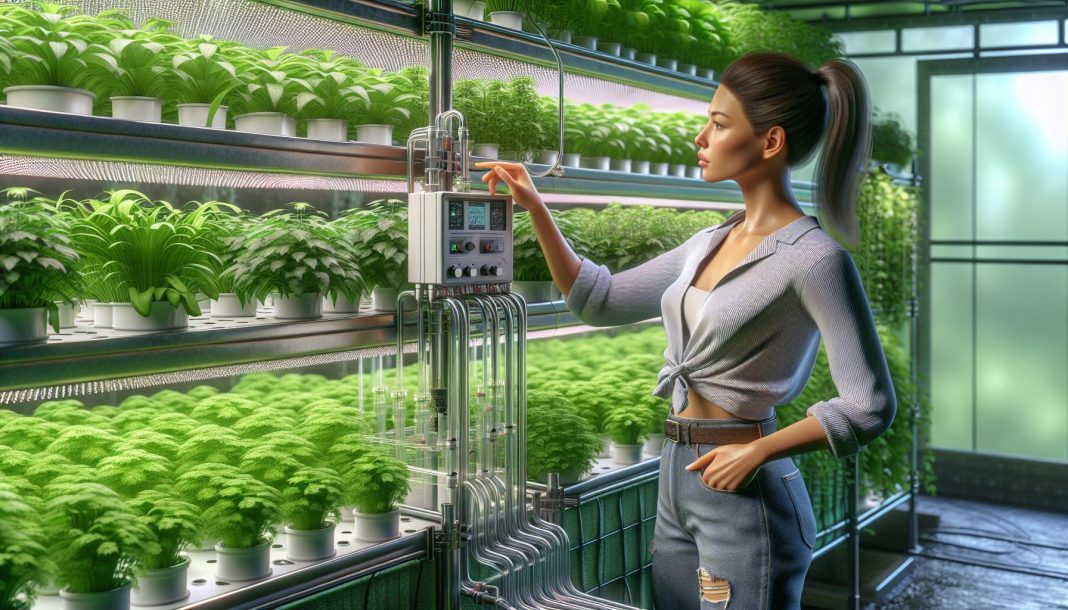Imagine growing fresh herbs, vegetables, and flowers in your home without needing a green thumb. Hydroponic growing systems make this possible by using water, nutrient solutions, and smart technology to cultivate plants efficiently. These systems allow you to monitor and manage your indoor garden with ease, ensuring optimal growth conditions.
You’ll discover how hydroponic systems can transform your gardening experience. Whether you’re a seasoned gardener or a complete novice, these systems offer a hassle-free way to enjoy homegrown produce. Learn about the benefits of hydroponics, how to set up your system, and tips for maintaining a thriving indoor garden. Get ready to revolutionize your gardening approach and enjoy a bountiful harvest year-round.
Quick Guide To Hydroponic Growing Systems
Hydroponic growing systems let you cultivate plants without soil by using water, nutrient solutions, and sometimes air. These systems offer a modern solution for growing fresh herbs, vegetables, and flowers indoors, making them ideal for both beginners and experienced gardeners.
Key Components and How They Work
Hydroponic systems use several essential components to support plant growth.
- Water Reservoir: Stores and supplies water and nutrients to the plants. This helps maintain a consistent level of hydration.
- Growing Medium: Supports plant roots without providing nutrients. Common materials include perlite, vermiculite, and coconut coir.
- Nutrient Solution: A mix of essential minerals dissolved in water. It ensures plants get the nutrients they need for growth.
- Air Pump and Air Stones: Provide oxygen to the roots if the system is submerged in water, which helps prevent root rot.
- Grow Lights: Offer the necessary light spectrum for photosynthesis, especially crucial if you’re growing plants indoors away from natural sunlight.
These components work together to create an efficient, controlled environment for plant growth, allowing you to manage water and nutrient levels precisely.
Types of Hydroponic Systems
Different hydroponic systems cater to various needs and skill levels. Here are the main types:
- Wick Systems: The simplest kind. Uses a wick to draw nutrient solutions to the plant roots. Best for small plants and beginners.
- Deep Water Culture (DWC): Plants are suspended in nutrient-rich water with an air pump providing oxygen. Suitable for leafy greens.
- Nutrient Film Technique (NFT): Nutrient solution flows continuously over plant roots in a thin film. Common in commercial setups for leafy greens and herbs.
- Ebb and Flow (Flood and Drain): Floods the grow area with nutrient solution and drains it back into the reservoir. Good for medium-sized plants like tomatoes.
- Aeroponics: Roots are misted with nutrient solutions while suspended in the air. Provides high oxygen levels but needs precise control.
- Drip Systems: Nutrient solutions drip directly onto the plant roots, either in recovery (recirculates unused solution) or non-recovery (unused solution doesn’t recirculate). Versatile and scalable.
These systems range from simple setups you can try as a beginner to advanced systems requiring precise control, suitable for more experienced gardeners.
By understanding these key components and types of hydroponic systems, you can choose the one that fits your gardening needs and skill level best.
Benefits of Hydroponic Gardening
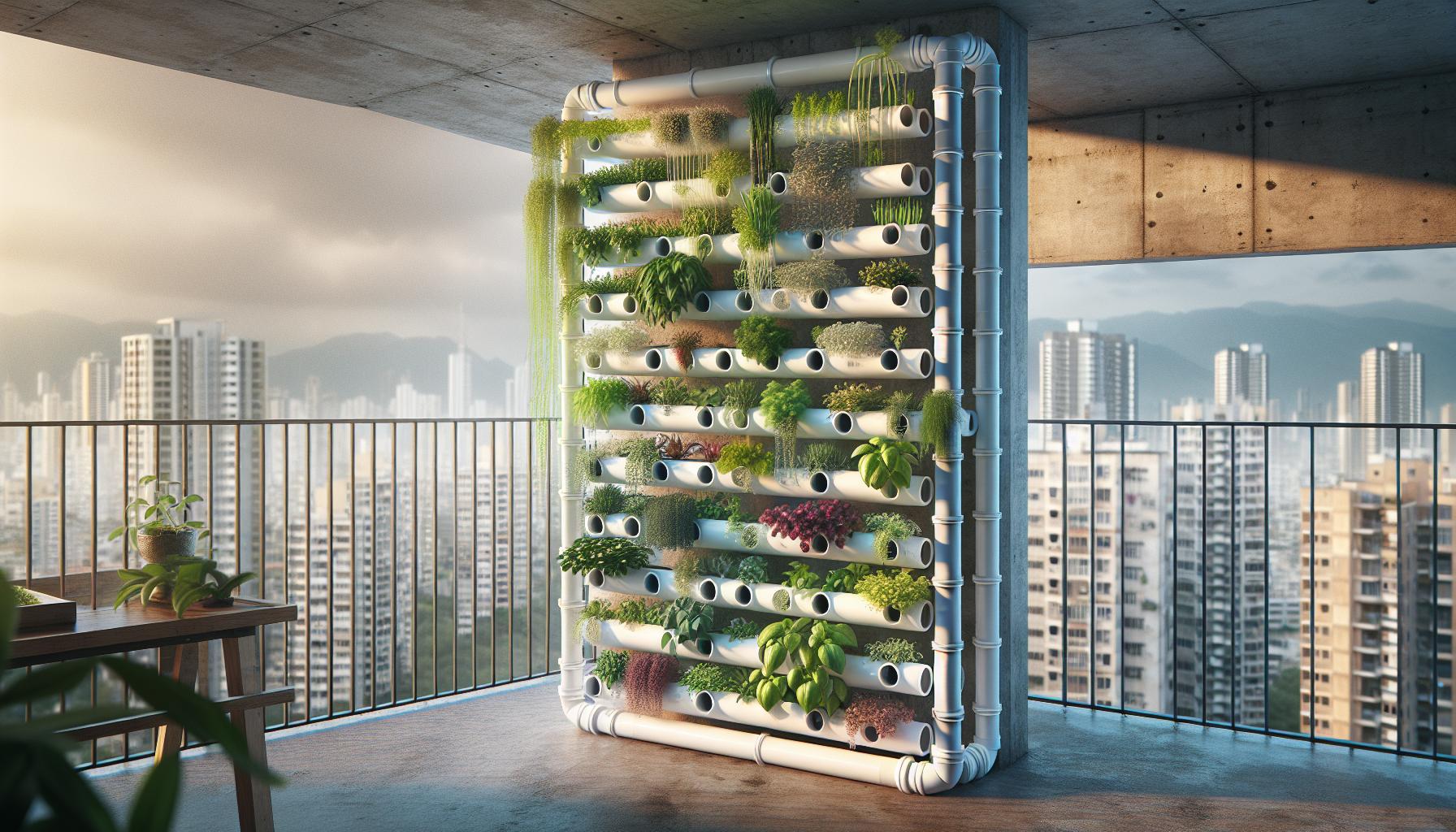
Space Efficiency and Scalability
Hydroponic gardening makes the most effective use of space available. With soil-based gardening, you need larger plots of land. But, hydroponics allows vertical stacking. Smaller spaces can produce impressive yields. It’s adaptable to apartments, balconies, or small backyards.
Consider something like an A-Frame using PVC tubes and vertical frames. You can maximize your available space and grow a variety of plants. You’ll achieve high-density planting, ensuring you get the most out of every square inch.
Scalability is another advantage. You can start small and expand your system as needed. Whether you’re a beginner testing the waters or an experienced gardener looking to increase production, hydroponics can scale with you.
Faster Plant Growth and Higher Yields
One of the most cited benefits of hydroponics is faster plant growth. Plants grow at least 20% faster in hydroponic systems compared to soil. Since hydroponics delivers nutrients directly to the roots, plants don’t expend energy searching for them. This efficiency translates to quicker growth cycles.
Also, expect higher yields. Studies show that hydroponic systems can produce at least 25% more yield than traditional soil methods. Holland Hybrid tomatoes, for instance, demonstrate this increased productivity clearly.
The growth rate combined with higher yields means more output per plant. You’ll get quicker harvests and more of them, which is particularly beneficial for commercial growers or anyone looking to maximize their food production.
In your hydroponic garden, consistent nutrient supply leads to healthier plants overall. You eliminate much of the guesswork related to soil gardening, making your growing experience more predictable and rewarding.
Setting Up Your Hydroponic Garden
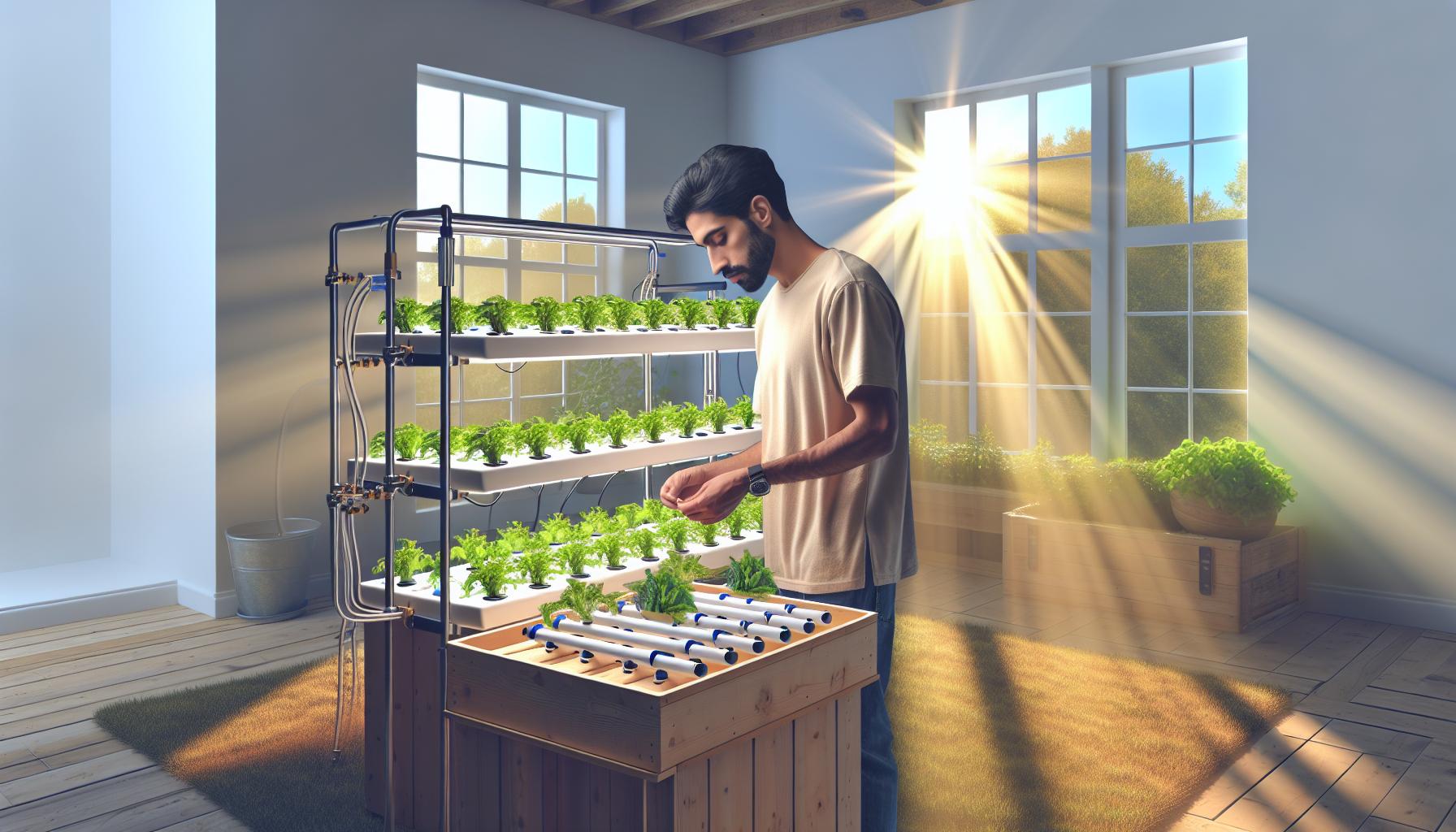
Choosing the Right System for Your Space
Selecting the suitable hydroponic system depends largely on the space available. Assess the area where you plan to set up your garden. Smaller spaces benefit from compact systems like Wick Systems, which require minimal equipment and maintenance. For larger areas, consider Flood and Drain systems, offering scalability and high yield potential. Always measure the dimensions of your space to ensure the system fits comfortably.
Choose a system that matches your gardening expertise and goals. Beginners might find Deep Water Culture (DWC) systems advantageous due to their simplicity. More advanced gardeners can explore Aeroponics, which provides maximum oxygen to plant roots, enhancing growth. Remember, vertical systems like the Nutrient Film Technique (NFT) work well in limited spaces by utilizing vertical stacking to maximize plant density.
Essential Supplies and Nutrients
Acquire all necessary supplies during the initial setup to ensure a smooth gardening experience. Essential components include:
- Hydroponic Trays: These hold your plants and growing medium. Ensure they’re appropriately sized for your chosen plants.
- Tray Stands: Provide stability and support to the trays. Opt for adjustable stands for easier maintenance.
- Hydroponic Reservoirs: Store the nutrient solution. Larger reservoirs reduce the frequency of refilling.
- Growing Media: Common options include Rockwool, clay pellets, and coco coir. Choose based on plant needs and availability.
- Nutrient Solutions: These are critical for plant growth. Use premade solutions designed specifically for hydroponics. Ensure they contain essential nutrients like nitrogen, phosphorus, potassium, calcium, magnesium, and trace minerals.
Liquid fertilizers are convenient, as you simply measure and mix according to the label’s instructions. Keep extra nutrient solution on hand to avoid interruptions in supply. Remember, hydroponic systems demand consistent water quality. Regular checks and adjustments ensure optimal plant health.
Setting Up the System
Once you’ve gathered supplies, begin by assembling the hydroponic system according to the manual. Place the hydroponic trays on the stands and connect them to the reservoir with tubing. Fill the reservoir with water and add the nutrient solution, ensuring it’s mixed thoroughly.
Install an air pump and air stones to oxygenate the water, promoting healthy root growth. Position grow lights above the plants, ensuring they receive adequate light throughout their growth cycle. Check that all components are securely connected and functioning.
Monitoring and Maintenance
Your hydroponic garden requires regular monitoring. Use the associated app to track water levels, nutrient concentration, and temperature. The app sends notifications if adjustments are needed, ensuring consistent care.
With the setup complete, turn on the system and switch to automatic mode. The system will manage water and nutrient levels, while you can enjoy watching your garden thrive. Regularly inspect for any issues and make adjustments as necessary.
Managing Your Hydroponic System
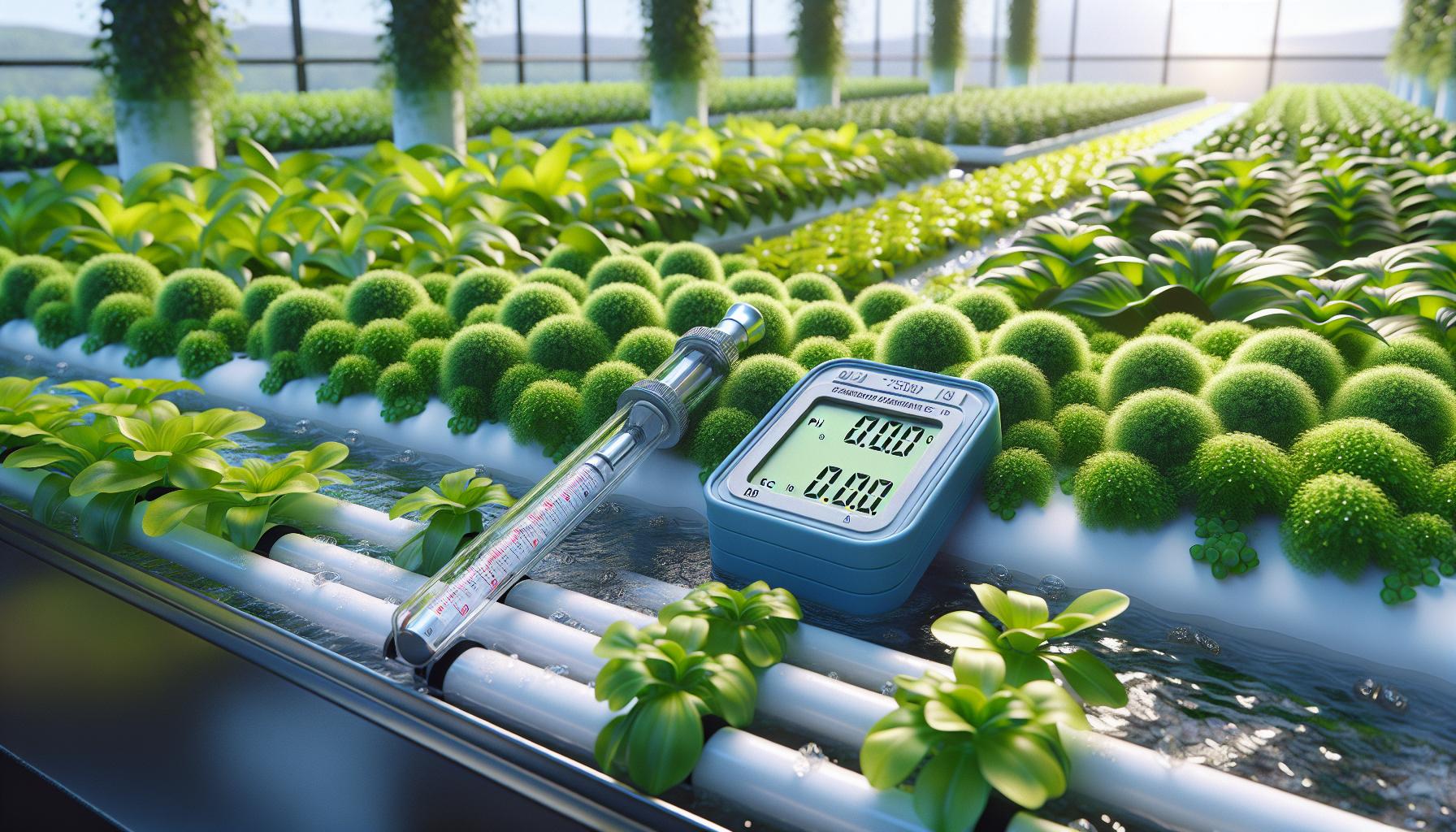
Effective management of your hydroponic system ensures healthy plant growth and maximizes yields. Keep your system in optimal condition by focusing on key areas such as pH and nutrient levels, as well as addressing common maintenance tasks and troubleshooting issues.
Monitoring pH and Nutrient Levels
Consistently check the pH and nutrient levels in your hydroponic system to maintain ideal growing conditions. Most plants thrive in a pH range of 5.5 to 6.5. Use a digital pH meter for accurate readings. If the pH is off, adjust it using pH up or pH down solutions.
Nutrient levels are equally crucial. Use an electrical conductivity (EC) meter to measure the concentration of nutrients in your solution. Ensure the nutrient solution is balanced with all essential macro and micronutrients. Too high or too low nutrient levels can harm plant growth. For accurate nutrient management, follow guidelines specific to your plant species.
Common Maintenance Tasks and Troubleshooting
Regular maintenance keeps your hydroponic system running smoothly. Clean the system components like pumps and tubing to prevent clogs from algae, plant debris, and nutrient build-up. Inspect the roots and remove any dead or decaying material.
Check your water source quality. Municipal water usually works best. Test the water for pH and EC before using it in your system. Avoid rainwater, as it may contain bacteria and parasites, and be cautious with softened water due to high salt content.
Address issues promptly. If you notice slow growth or poor plant health, first check the pH and nutrient levels. Examine the roots for signs of rot or disease. Clean and sanitize affected areas. Replace contaminated nutrient solutions and improve water circulation to mitigate such problems.
By focusing on these areas, you ensure your hydroponic garden remains healthy and productive. Regular monitoring and maintenance are key to achieving the best results in hydroponic gardening.
Conclusion
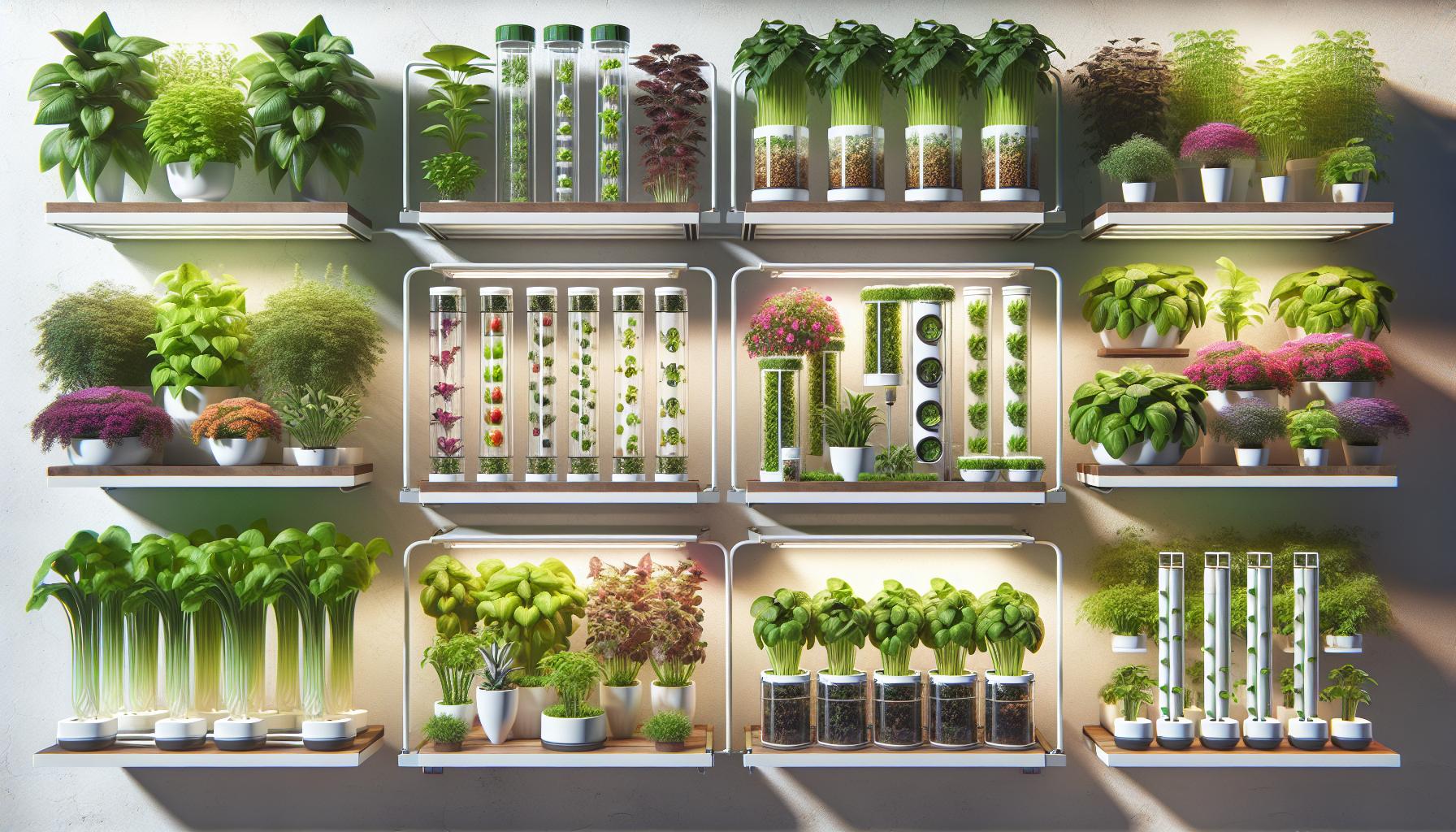
Hydroponic growing systems revolutionize the way you approach gardening. They offer an efficient, space-saving solution perfect for indoor and outdoor setups. With the right system, you’ll enjoy faster growth rates and higher yields compared to traditional soil gardening.
Types of Hydroponic Systems
- Deep Water Culture (DWC): Ideal for beginners, DWC involves suspending the plant roots in nutrient-rich water. Ensure the roots are only 1/3 to 1/2 submerged once they extend beyond the net pot. The air gap above the water provides necessary aeration. You might use an airstone for better oxygenation, especially if growing various plants in a single container.
- Nutrient Film Technique (NFT): This method uses a continuous flow of nutrients over the roots. It’s vital to maintain a water flow rate of 8-10 oz per minute for optimal lettuce health. Ensure the roots don’t drown by adjusting the flow rate based on the plant’s size and type.
Managing Your Hydroponic System
- Monitor pH and Nutrient Levels: Regularly check and adjust the pH to keep it within the ideal range (usually 5.5 to 6.5) and ensure nutrient levels meet your plants’ needs.
- Water Quality: Use clean, filtered water to prevent contaminants from harming your plants. Check the water temperature, keeping it between 65-75°F for most plants.
- Maintenance Tasks: Tasks include cleaning the system components, replacing nutrient solutions, and inspecting plants for disease or pest issues.
Troubleshooting Tips
Address problems quickly to maintain a thriving garden. Yellowing leaves might indicate a nutrient deficiency, while root rot suggests poor aeration or overwatering. Adjusting these factors ensures healthier plants and better yields.
Hydroponic systems cater to gardeners looking for efficient, innovative methods to grow plants indoors or outdoors. By monitoring and maintaining your setup diligently, you can achieve impressive, sustainable results.
